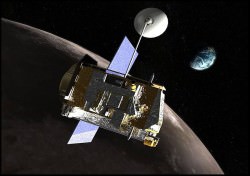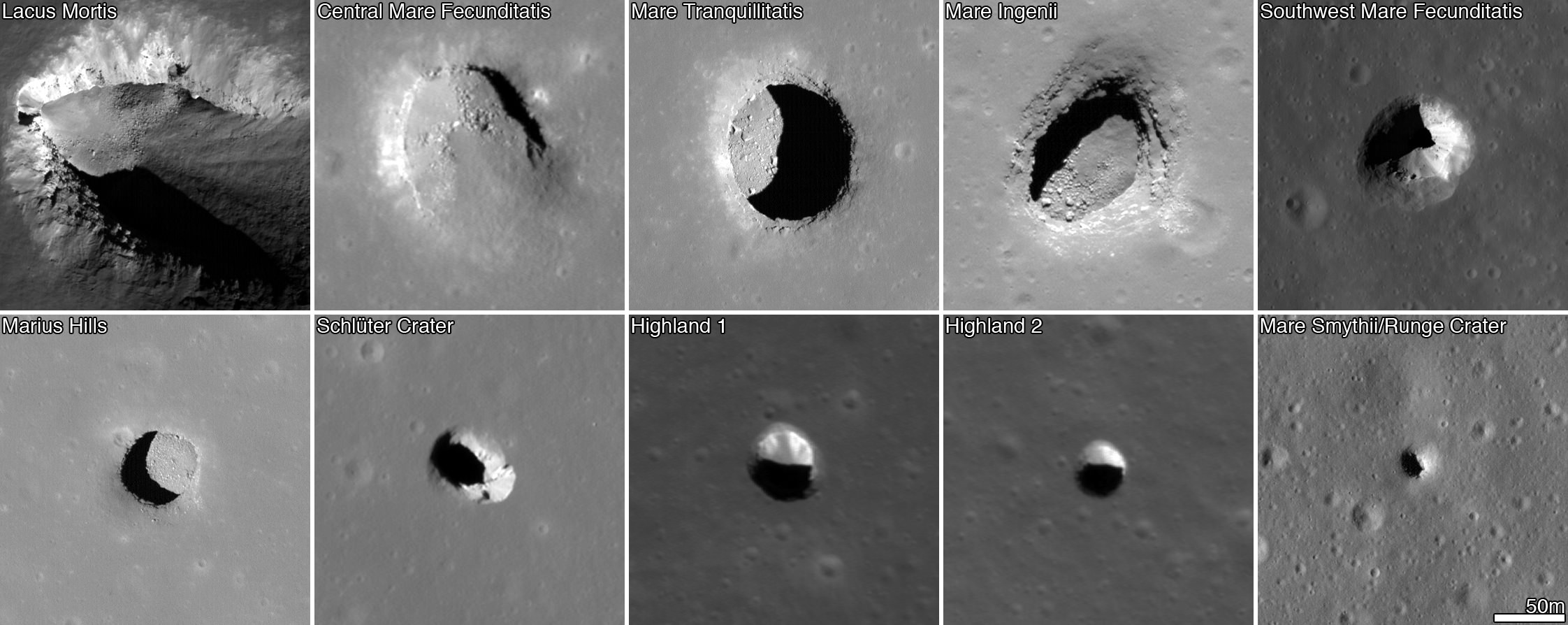Just look at that new video from NASA showing the first moon landing site in three dimensions. It’s tempting to touch on the surface nearby the Eagle lander there in the center and do some prospecting.
You’ll notice a lot of craters in that video, which is based on Lunar Reconnaissance Orbiter data. Across the moon’s surface, a separate study saw the spacecraft investigate 200 extremely steep-walled craters, known as “pits”.
These would be fascinating places to send astronauts for scientific study. Not only that, they’re actually one of the safest spots possible on the moon, according to a new study.
“Pits would be useful in a support role for human activity on the lunar surface,” stated lead researcher Robert Wagner of Arizona State University.
“A habitat placed in a pit — ideally several dozen meters back under an overhang — would provide a very safe location for astronauts: no radiation, no micrometeorites, possibly very little dust, and no wild day-night temperature swings.”
And if you look at the picture below, you can see at least one of those pits is in the Sea of Tranquility — the approximate landing area where Apollo 11 touched down 45 years ago this week. The pits were found mainly using a computer algorithm that scanned LRO photos, although a few of the craters were previously identified with the Japanese Kaguya spacecraft.
Large craters or lunar “seas” (ancient, solidified lava flows) are the locations where most of these pits are found. How they were formed is being investigated, but there are some hypotheses. Perhaps a meteorite impact caused a collapse, or perhaps molten rock flows under the surface gradually lost their lava, leaving voids.

To learn more, the researchers say more LRO images would be great (only 40% of the surface imaged had the appropriate lighting conditions for this study) and in the future, we’d need to get much closer-up than pictures taken from orbit.
“The ideal follow-up, of course, would be to drop probes into one or two of these pits, and get a really good look at what’s down there,” added Wagner.
“Pits, by their nature, cannot be explored very well from orbit — the lower walls and any floor-level caves simply cannot be seen from a good angle. Even a few pictures from ground-level would answer a lot of the outstanding questions about the nature of the voids that the pits collapsed into. We’re currently in the very early design phases of a mission concept to do exactly this, exploring one of the largest mare pits.”
You can read more about the research in the journal Icarus.
Source: NASA


But how safe would these pits be to dwell in? How big is the risk of collapse? We don’t even know how they came to be…
They are much safer than any cave in Earth. They have been there unchanged for billions of years. No geology or erosion is occuring so there is no force which could in any way change any cave on the Moon.
Pretty sure there are occasional ‘moon quakes’, but they probably aren’t a big problem.
At 1/6 of Earth’s surface gravity, those plastic helmets one has to wear on construction sites, would actually work to protect against a little rubble falling from the cave ceiling during a moon quake.
Yes! Lets! As I’ve previously mentioned… lets use mortars to launch grappling hooks and cables across the pit(s). Anchor them securely then deploy a ‘cable crawler’ camera/instrument package. The instrument package would have an ‘elevator’ cable to lower it for close ups as the cable crawler maneuvers around the sky light/opening as supported by an interwoven system of sky cables.
I’ve never seen an image of the Apollo 11 landing site that showed it obviously landed in the ejecta/ray pattern of that nearby crater. How might that alter the elemental composition in the mineralogical findings?
I sense a mission opportunity for this little guy
One advantage of caves is that you could bring soft folded or inflatable living structures and hang them in the ceiling. Like hanging tents. Large low mass living space in protective caves.
Some part of a lava tube might even be made air tight, given an internal oxygen atmosphere and having the toxic dust evacuated. Then humans could walk even naked on raw Lunar rock, touching its walls, not just viewing it indirectly via a space suit. (Unless the bedrocks too are toxic).
I like the idea of collecting solar radiation with a large array of active mirrors and focusing the collected beams into a steerable Fresnel concentrator which would then ‘paint’ the interior walls of a lava tube. Instantly fuse the lava into a hard volcanic glass coating. An airtight volcanic glass coating that is…
Later the array can be used for materials processing and power generation.